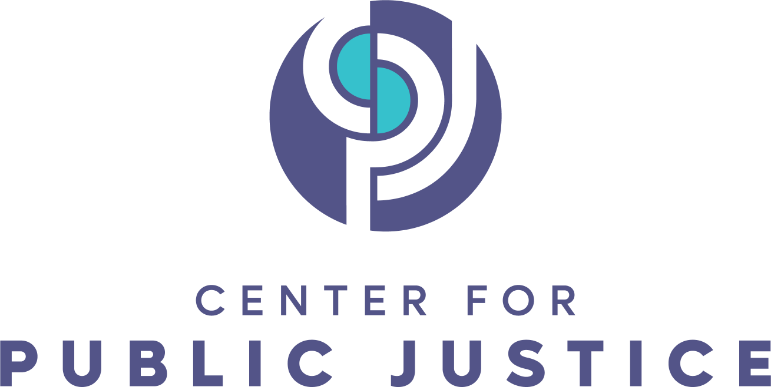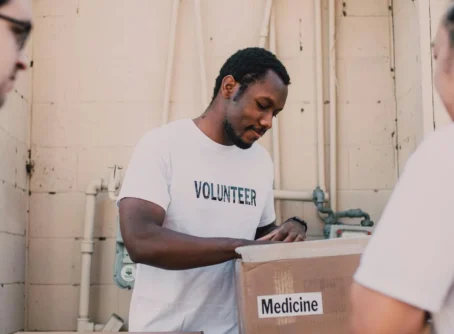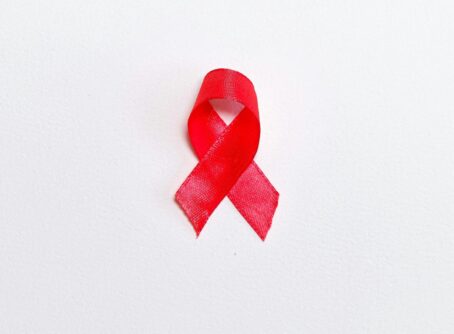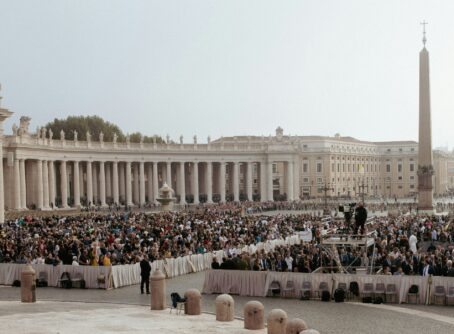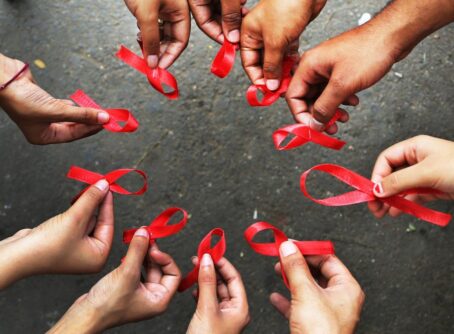There is a sacred dimension missing in public life—not a vague sense of moral loss, but a failure to recognize the presence of the Divine in the institutions, traditions, and bodies that carry moral weight. Sacred-open public life begins with the conviction that every material reality—policies, communities, congregations, land, and law—is spiritually significant. It insists that civic and legal structures must be responsive to more than material needs. They must recognize that to seek the Sacred is to be human. This approach does not avoid difference or complexity. It assumes them. A pluralistic society includes those shaped by diverse religious traditions, spiritual paths, and secular animating beliefs.
The Black Church and Enacted Freedom
The Black Church has long practiced religious freedom as an embodied, communal reality. It has formed people spiritually and civically, offered essential social services to its own communities and beyond, and built sacred space in the midst of political and cultural exclusion. Yet in national conversations about religious freedom, the Black Church is rarely positioned as theologically central or institutionally authoritative. Instead, religious freedom is too often discussed as though the White Church defines its scope—and the Black Church is asked to join without always having the opportunity to shape the terms.
The seventh annual Religious Freedom Summit was held at Princeton Theological Seminary from April 9-11 and convened Black church leaders, legal scholars, theologians, and artists to examine the historic and contemporary role of the Black Church in advancing and embodying religious liberty. Hosted by the Seymour Institute for Black Church and Policy Studies in collaboration with the Betsey Stockton Center for Black Church Studies at Princeton Theological Seminary, the Summit sought to recentralize the Black Church in discussions about religious freedom.
Since slavery, Black Christians in the United States have exercised their faith through institution building, prophetic public witness, and subversive spiritual practices like freedom songs. From the underground gatherings of the enslaved to the freedom schools of the Civil Rights Movement, religious freedom has always been central to Black ecclesial life. Yet the right to incarnate and pass on to the next generation Christian tenets has remained fraught —from colonial laws permitting Christians to enslave fellow Christians to today’s debates surrounding race, family, and identity.
Today, the Black Church faces the dual task of defending its right to live out its sacred teachings while also enacting their religious freedom, often through advocacy for the crucial needs of their communities. The Summit honored Fannie Lou Hamer, whose public life was shaped by the conviction that faith is not private and justice is not optional. Her activism flowed from a deep belief in the sacred worth of every person and the constitutional promises that ought to protect that worth. She never separated her faith from her advocacy for equal protection under the law—neither should we.
As Dr. Jacqueline Rivers of the Seymour Institute has observed, the Black Church does not always recognize its own use of religious freedom—not because it is absent, but because it has been enacted rather than named. The Black Church has protected its spiritual authority not through legal frameworks but through embodied practices of worship, education, organizing, and public witness. In her words, “ the Black Church’s embodiment of religious freedom is a testament to its enduring impact on American society. It represents the unwavering pursuit of faith and freedom in the face of adversity and remains a beacon of hope. As discussions around religious freedom continue to evolve, acknowledging the Black Church’s vital role in shaping this conversation is a step toward a more just and equitable future.”
At the same time, as Rivers pointed out, the White Church has not always been willing to broaden its vision of religious freedom to include the issues most pressing to the Black Church. Smaller congregations with limited resources are often carrying disproportionate institutional burdens: racial injustice, educational inequity, historical erasure, and local economic disinvestment. Calls to engage in religious advocacy can ring hollow when they do not come with solidarity or investment in the daily work these churches are already doing.
For Black Christians in the United States, religious freedom has never been primarily a matter of personal belief. It has always been enacted institutionally—lived out in community, under pressure, through the building and protection of sacred spaces. Dr. Jacqueline Rivers refers to this as “enacted religious freedom,” explaining that it’s often exercised without formal legal claims because “it is taken for granted, or done instinctively, in the course of living out faith.” This is a form of religious freedom that emerges in practice before policy—a freedom shaped by necessity, struggle, and theological conviction.
Take the founding of the African Methodist Episcopal Church. When Bishop Richard Allen and others walked out of a segregated white church, they weren’t looking for better treatment within existing structures—they were building something new. The founding of Mother Bethel AME Church was an act of institutional creation—a declaration of sacred autonomy and Black Christian dignity.
The Black Church is often described as a site of hope and resilience—and it is—but it is also a structure of public theology and moral authority. It has formed generations of leaders who have lived their faith in public, often without legal protection, and sometimes without naming it as religious freedom. This dynamic is not merely conceptual. Many Black congregations—especially smaller or poorer ones—are already struggling. Calls to join broader religious freedom efforts often come without attention to the institutional pressures these churches are under. As Rivers puts it, it is difficult to ask congregations “to take up an additional cause when they’re not seeing you stand with them in their most pressing concerns.”
Fannie Lou Hamer and Embodied Faith and Freedom
The Summit honored Fannie Lou Hamer. Hamer lived a form of religious freedom that was embodied, not abstract. Her Christianity wasn’t incidental to her organizing—it was the source. She rooted her public witness in the Black Church, where her spiritual formation took shape. She wasn’t performing for an audience. She was testifying to what she believed. Her resistance was grounded in Scripture, in song, and in the daily life of her faith community. She stood up to local landowners and national leaders not as a secular activist loosely affiliated with religion, but as a faithful member of a worshiping body.
There is a persistent tendency to strip Hamer’s activism of its theological grounding—to make her more palatable by reducing her to political courage alone. But that kind of reduction does violence to the truth. Hamer’s work—starting a farm, feeding the poor, rejecting coerced abortion and sterilization—was deeply rooted in a Black Church theology that integrated faith and justice. She didn’t separate her theology from her public life. Like so many others before and after her, she enacted religious freedom not as a legal concept but as a daily practice of embodied spiritual conviction.
That witness continues. Across the country, Black churches are still enacting their faith publicly, often in contexts that leave them out of dominant religious freedom narratives. They aren’t waiting for mainstream validation. They are building, feeding, forming, and testifying. That is where any honest conversation about religious freedom in America must begin.
Spiritual motherhood helps name what has too often gone unspoken. It is not symbolic or sentimental. It is a form of public, sacrificial caregiving—rooted in spirit, carried out through relationships, and sustained by institutions. Hamer lived this with moral clarity. She prayed, she organized, she wrote, she sang spirituals. These were not side activities—they were the expression of a practical theology. She stayed deeply connected to the women who sustained her. In a letter to her friend Rose, she wrote, “You are a mother for me, although I’m the oldest. I thank God there are people like you who care.”
Her letters often carried this kind of spiritual charge. In one, she signed off: “Yours for God and for justice, Fannie Lou Hamer.” That wasn’t rhetorical. It was theological. Her devotion to God and her devotion to justice were one and the same. Her spiritual motherhood was incarnational. It showed up in relationships, in the institutions she built, and in the formation of a people prepared to carry on the work.
A short documentary by The World on Hamer’s life includes rare reflections from her relatives. One shared, “She truly believed in God. We were raised in a religious family, and if you were part of that family, you were going to be involved in the church somehow. If she was there, you were going to do something—whether it was sing, pray, preach, whatever. It seemed like everybody was in the choir. And if they weren’t a preacher, they were a Sunday school teacher or the Sunday school superintendent. That’s just how we were brought up.”
Hamer would often be singing “Go Tell It On the Mountain…let my people go.” Her songs carried the weight of freedom. One relative said, “Her songs moved people. It motivated people. The freedom songs that she sang, that’s what she used, and she was good at it.” And her great-niece added, “She wanted better for her children. She wanted better for her community. And I think that was the driving force—to just make things better for everyone, regardless of their color. Aunt Fannie Lou helped organize Freedom Summer.”
Freedom Summer—sometimes called the Mississippi Summer Project—was not merely a political strategy. It was a spiritual confrontation with a system designed to silence, exclude, and humiliate. In the summer of 1964, young people, many of them Black and white Christians formed in the moral traditions of their churches, traveled to Mississippi to support Black communities in registering to vote, building Freedom Schools, and cultivating local power in a place where terror enforced segregation.
At the center of it all was the Black Church—not in a symbolic sense, but in the most concrete ways: sanctuaries sheltering volunteers, feeding bodies and spirits, anchoring the work in prayer, scripture, and formation. Fannie Lou Hamer didn’t act despite her faith. She acted because of it. Her belief in voting rights was grounded in a conviction that every person bears the image of God and has the right to speak, to lead, and to shape the world around them.
Another documentary participant reflected, “You saw the person who motivated the crowd—who got people to go register and vote, the one who was shot at and went through all of that. But then, in her letters, you saw a different side—a woman, a mother, a wife, a friend—with all the weight and complexity that came with that.”
Her daughter echoed similar sentiments, “Just thinking about her… Loving and caring for four daughters—none of whom she gave birth to—but she loved us, and she took care of us.”
During the panel at the conference, Dr. Jacqueline Rivers, Prof. Jamal-Dominique Hopkins, and Dr. Wilfred Graves lifted up Hamer as a practical theologian. As one panelist described, she turned prayer meetings into organizing meetings. Her public worship and her justice work were not parallel tracks—they were one path. As moderator Stephanie Barrett and the panelists emphasized, Hamer’s faith has been largely erased from the dominant narrative about her life. As Dr. Rivers said clearly: “This is what religious freedom looks like. Let us use our religious freedom the way Fannie Lou Hamer did.”
Enacted religious freedom means recognizing the many ways people live out their faith through daily practices, through cultural forms, through community structures. The panel also reminded us that enslaved African people in the U.S. had no formal access to religious freedom—and yet they built the foundations of a religious tradition that insisted on the sacredness of freedom and faith for all.
Hamer was sterilized without her knowledge, consent, or permission. She is thought to have coined the term “Mississippi appendectomy” to describe how common forced sterilization was for Black women in the South. That legacy shaped her views on the dignity of all human life. At a White House Conference on food and nutrition for women and children, she used her platform to speak out against abortion—not out of political alignment, but as a direct expression of her faith and her experience. A woman denied the chance to carry biological children of her own, who adopted and raised four daughters, Hamer held that life—preborn and born, young and old, poor and marginalized—was sacred.
She believed women should have access to education about child spacing and healthy family planning. But she also saw coerced sterilization and population control policies as a continuation of eugenic ideologies that treated Black life as disposable. For her, rejecting abortion was not a rejection of women—it was a rejection of systems that denied the image of God in Black women, Black children, and Black communities.
As Dr. Graves shared, “Her biblical worldview guided every step of her activism. Her life really exemplified how racism, sexism, and poverty overlapped.” Panelists discussed how Hamer was sustained by daily spiritual practices—prayer, freedom songs, letter writing, and community—each one deepening her capacity to live out her religious freedom as a tool for justice.
She called us to reimagine religious freedom not as a legal abstraction or a partisan wedge, but as a theological invitation to incarnate justice in our own places. As one panelist said, loving God obligates us to seek justice for the marginalized in public life. Professor Hopkins named it well: Hamer lived an “experiential hermeneutic.” The biblical text, he said, was her autobiography. She interpreted her own life through Scripture—and Scripture through her lived experience.
Fannie Lou Hamer’s understanding of religious freedom was grounded in the belief that protecting it for the most marginalized protects it for everyone. Her Christianity was not performative—it was prophetic. She testified. And she lived it.
Sacred Stories, Sacred Institutions
The conference reflected on the power of sacred stories—how Gospel songs were also protest songs, how personal memory connects us to God’s providence. Dr. Graves reminded the room: “Story is so important—it helps us to relive God’s goodness.”
Hamer rejected the institutions that enslaved her. She refused to be buried on the plantation where she had spent her first 44 years. But she invested deeply in others: the Church, her family, her adopted daughters, her political organizing. She lived her religious freedom by forming institutions that reflected God’s justice.
She was a spiritual mother, a practical theologian, a woman who lived scripture with every fiber of her being. And her legacy calls us not to admire from afar, but to follow in kind: with truth, with power, with sacred conviction.
Let us use our religious freedom the way Fannie Lou Hamer did.
PC: Fannie Lou Hamer outside the Capitol in Washington, D.C. in September 1965. (William J. Smith/AP)
Chelsea Langston Bombino is a believer in sacred communities, a wife, and a mother. She serves as a program officer with the Fetzer Institute and a fellow with the Center for Public Justice.
